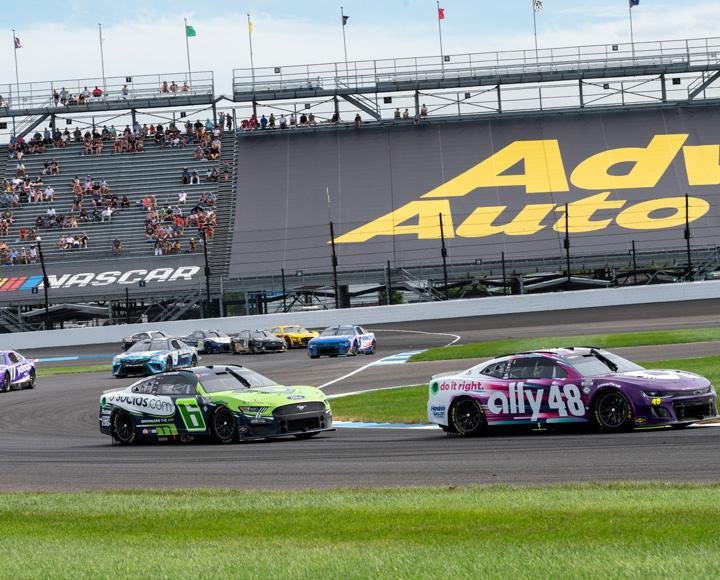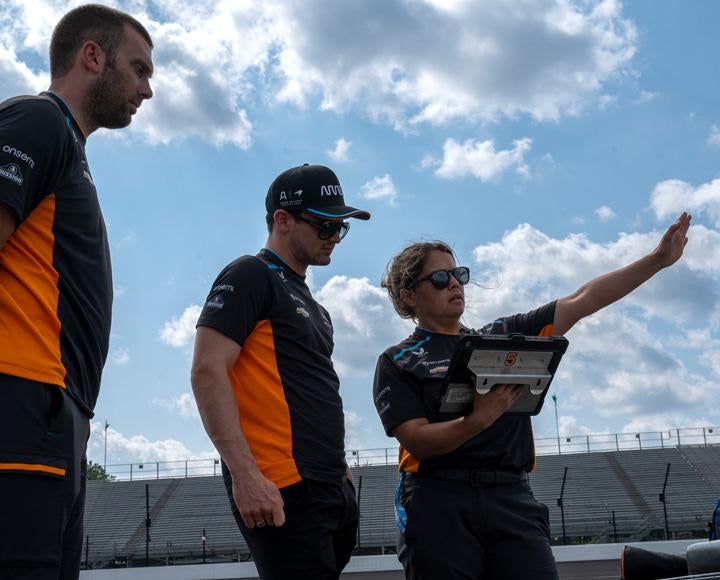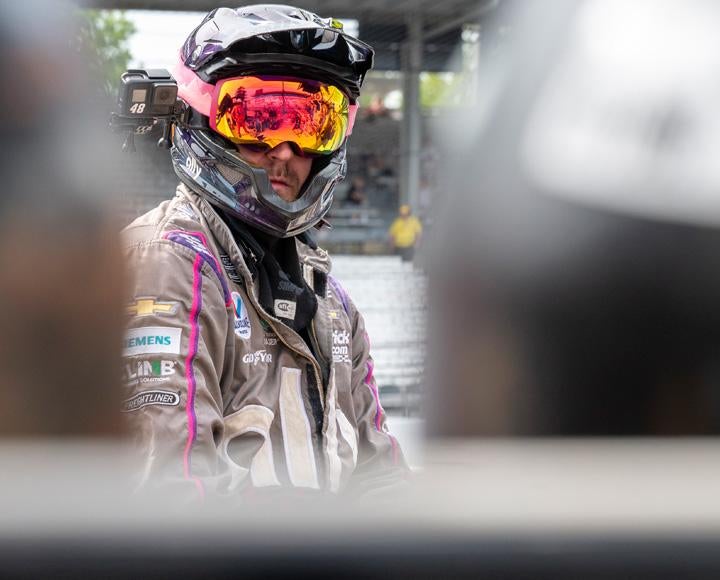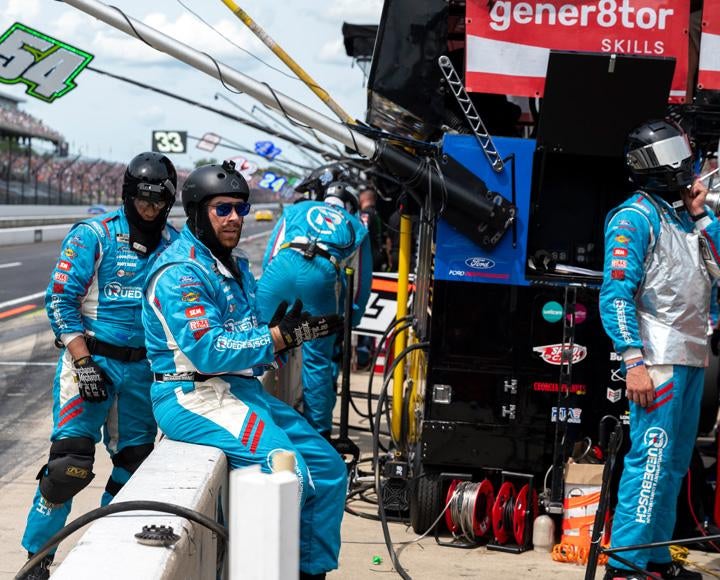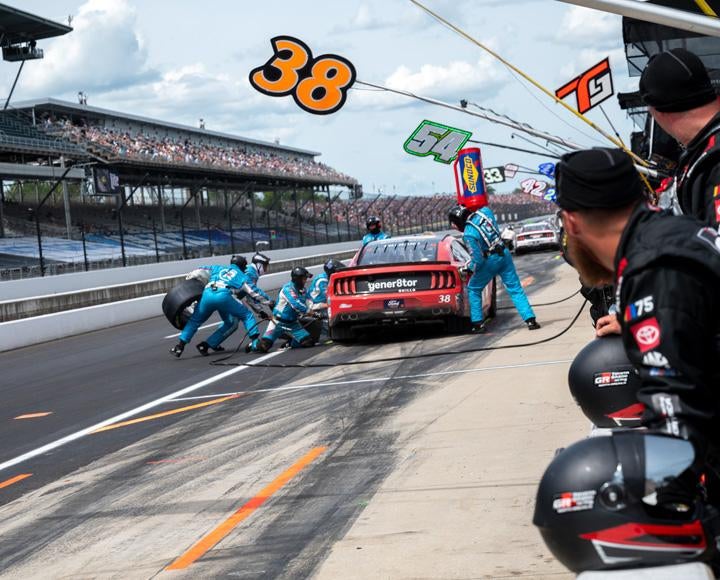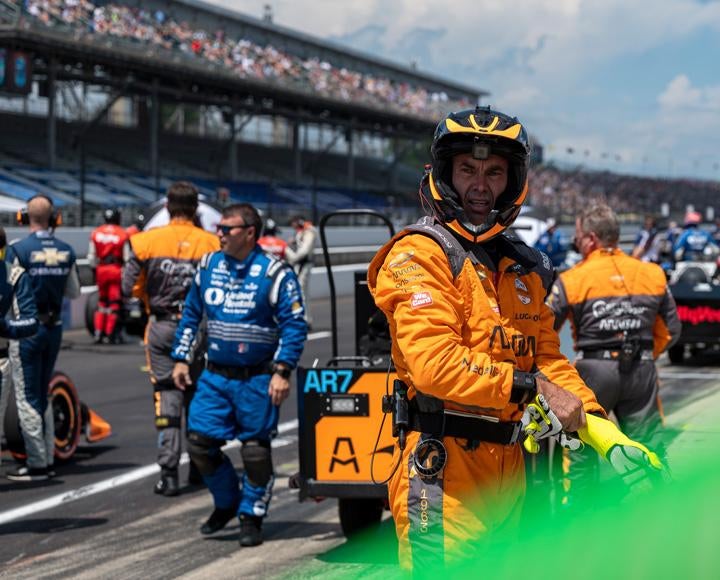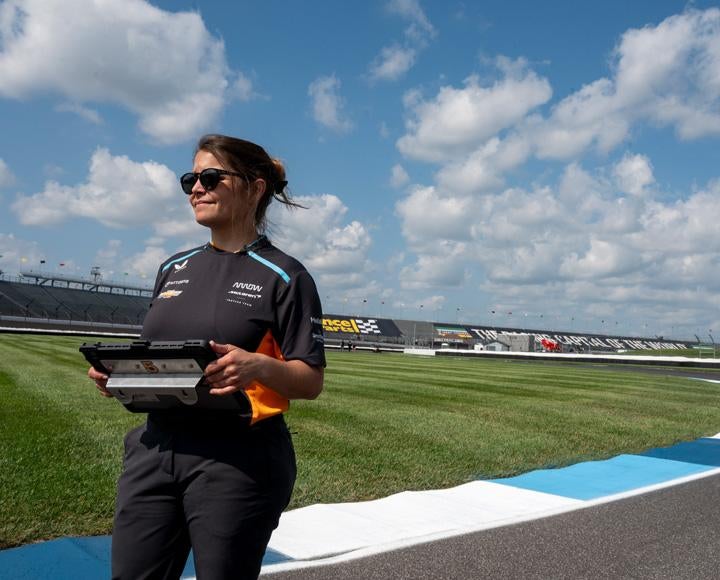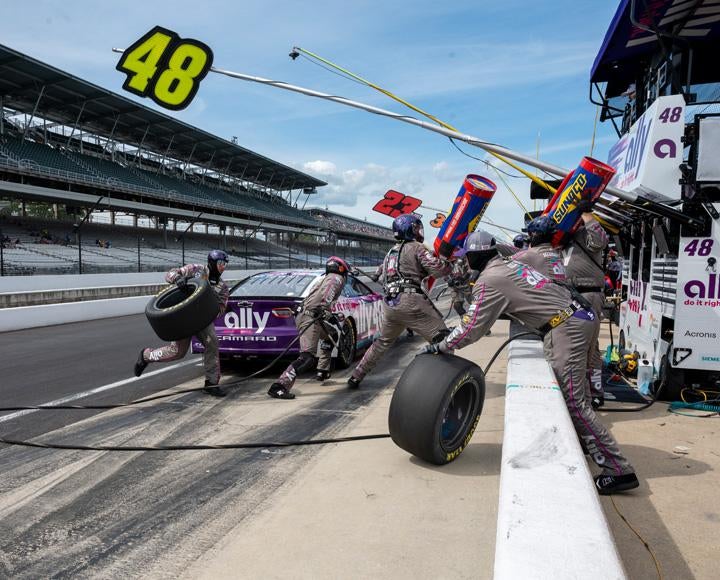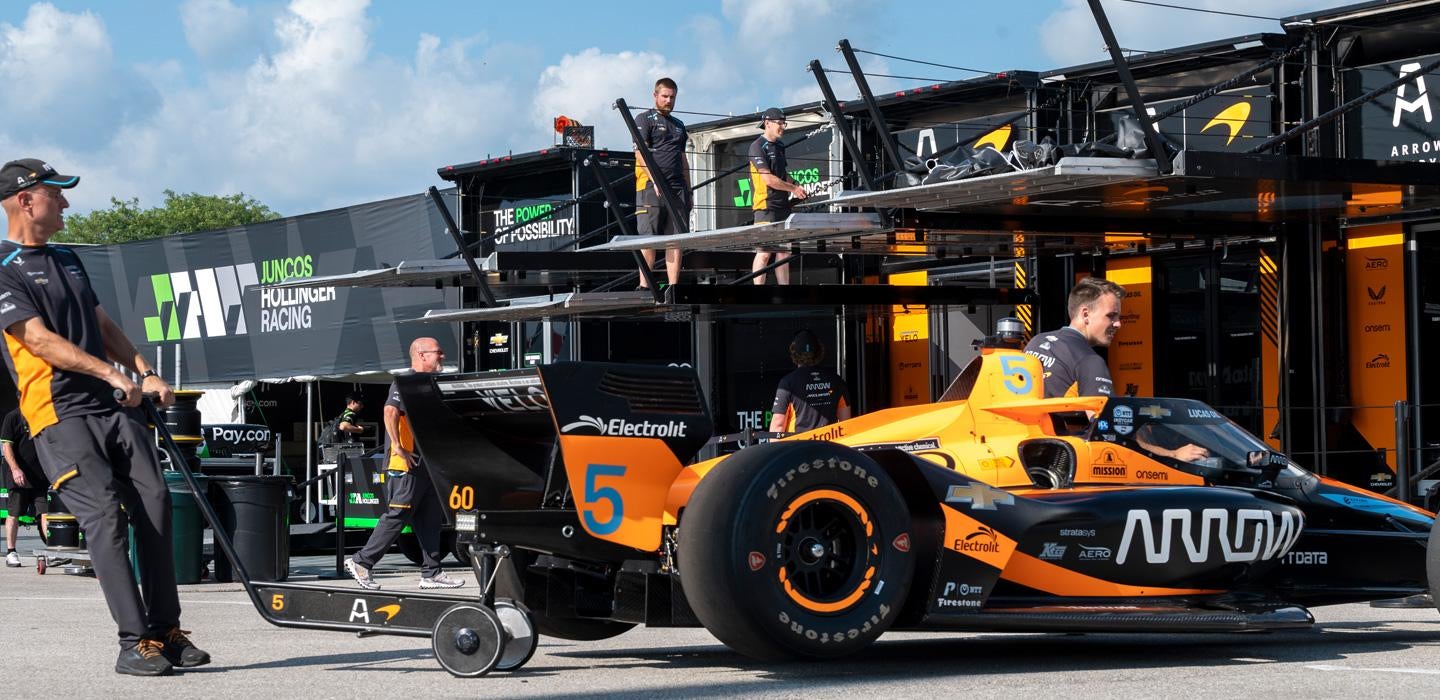
Subscribe to Pittwire Today
Get the most interesting and important stories from the University of Pittsburgh.Three Pitt alumni were among those competing for a checkered flag at the Indianapolis Motor Speedway last week as the country’s top auto racing bodies, IndyCar and NASCAR, held two separate races over the annual, eardrum-rattling Brickyard Weekend.
Kate Gundlach (ENGR ’06), a performance engineer for IndyCar team Arrow McLaren, hit the world-famous racetrack on Saturday for the Gallagher Grand Prix. The team took third place on the podium with driver Pato O’Ward piloting the No. 5 car.
[Read more about Gundlach's wild ride.]
The next day, former Pitt wrestling teammates Donnie Tasser (A&S ’13) and Matt Wilps (A&S ’13) competed against each other in NASCAR’s Verizon 200 at the Brickyard. Both work on pit crews — Tasser for Hendrick Motorsports’ No. 48 car and Wilps for Front Row Motorsports’ No. 38 car. Their cars finished fifth and 38th, respectively.
In racing, victory and defeat are decided by mere hundredths of a second. For pit crew members like Wilps and Tasser, that means changing a 200-pound tire in less than nine seconds, or about the time it takes the average person to buckle their seat belt and start the engine. For performance engineers like Gundlach, the equation is even more complicated. She’s responsible for helping to achieve the fastest lap time possible, relying on countless points of data, observation and the instincts of her driver — lessons she first learned as a member of the Swanson School of Engineering’s Formula SAE racing team.
“It’s almost more a game of psychology than it is engineering,” Gundlach said.
And it doesn’t end on the track. Working in motor sports is a grind. Most weekends are spent on the road, and life events — including the scheduled Cesarean section birth of Tasser’s second child — have to be worked around races.
“I honestly don’t know what else I’d be doing,” Tasser said. “You trade the less optimal parts of the job for the obvious benefits — chasing championships.”
“You don’t do it because it’s easy,” Gundlach said. “You do it because you love it.”
— April Johnston, photography by Tom Altany
